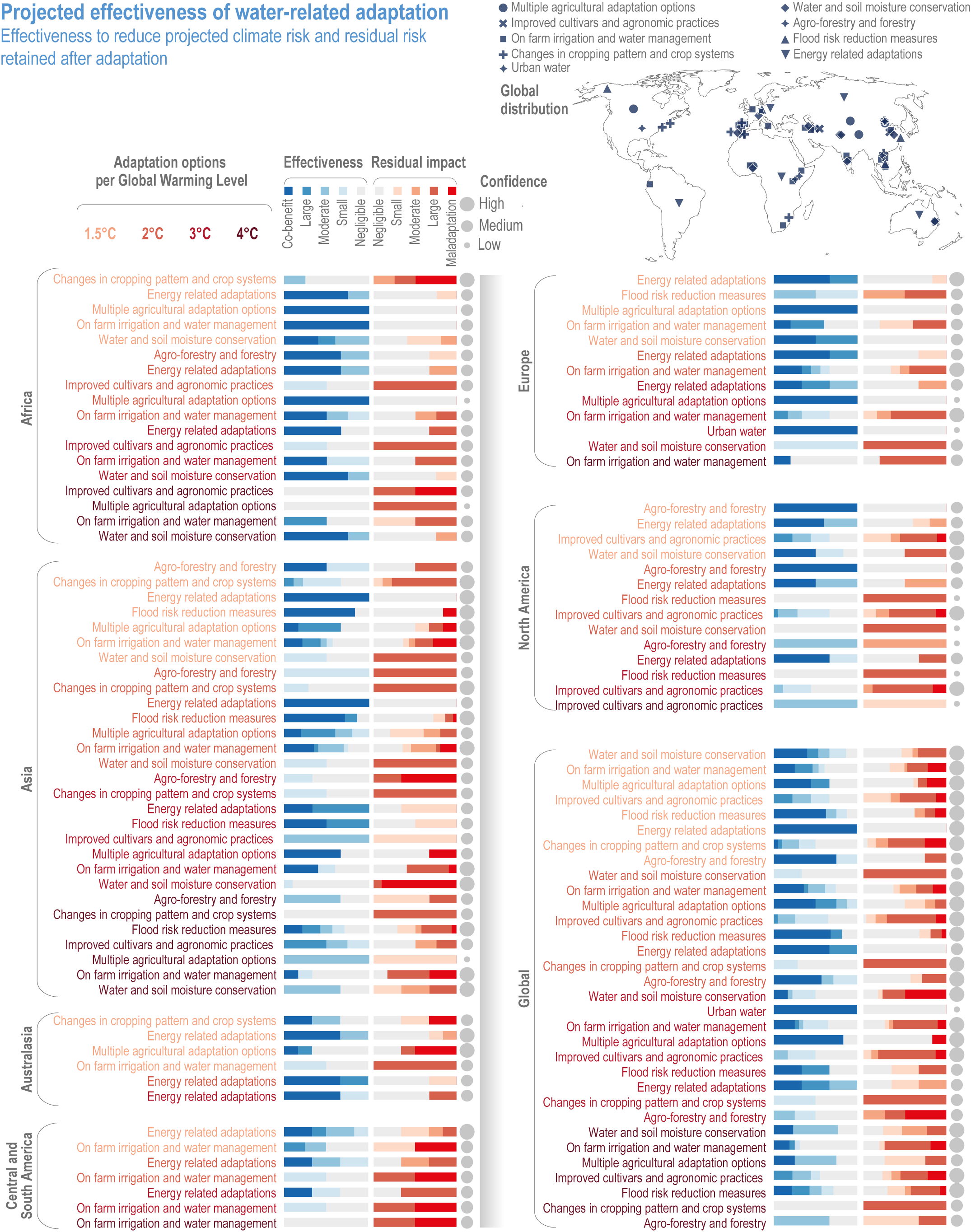Figure 4.28
Figure caption
Figure 4.28 | Projected effectiveness of adaptation options in returning the system to a study-specific baseline state relative to the projected climate impact; and level of residual risk retained after adaptation, relative to baseline conditions. Regional summaries are based on IPCC regions. Warming levels refer to the global mean temperature (GMT) increase relative to an 1850–1900 baseline. For each data point, the study-specific GMT increase was calculated to show effectiveness at 1.5°C, 2°C, 3°C and 4°C. Based on the ability of an implemented option to return the system to its baseline state, the effectiveness is classified based on the share of risk the option can reduce: large (>80%); moderate (80–50%); small (<50–30%); insufficient (<30%). Where the system state is improved relative to baseline, co-benefits are identified. Residual impacts show the share of remaining impacts after adaptation has been implemented: negligible (<5%); small (5 to <20%); moderate (20 to <50); large (≥50%). Where risks increase after adaptation, data points are shown as maladaptation. All underlying data is provided in Table SM4.6.
